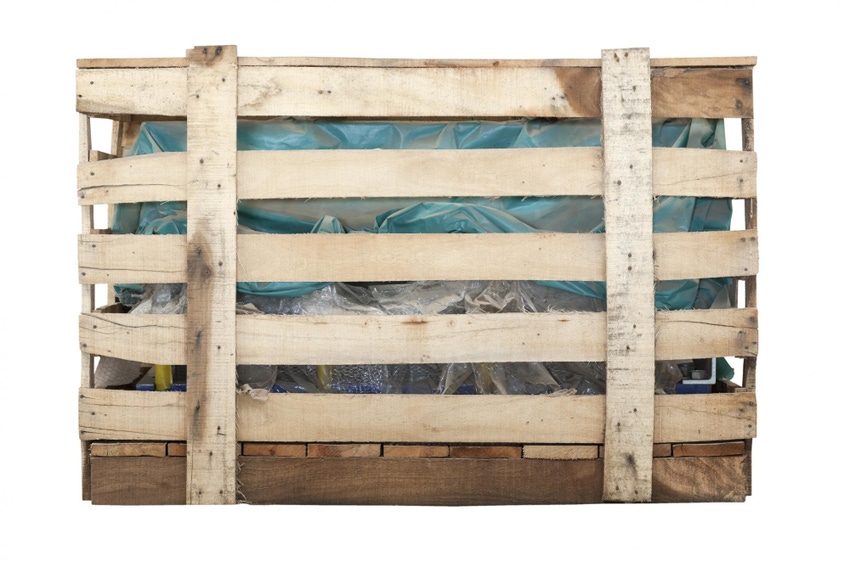Food packaging safety for equipment: Beware what lurks within
March 12, 2015

When you take delivery of crated packaging equipment, assume the worst and follow these 9 steps to reduce the risk of contaminating food production and storage areas.
The concepts discussed in previous installments of this column have focused on processes relating to packaging components, but they are also relevant to equipment handling.
Many readers either supply or use packaging equipment; therefore, this guidance is worthy of review. Food safety risks and hazards as described by regulatory agencies and guidance literature are bucketed into three basic categories: physical risks, chemical risks and microbiological risks. I’ve added a fourth category that is not technically “safety,” but still represents a serious risk to food and packaging professionals. I describe the fourth risk as “suitability and conformance.”
Food and packaging safety can be compromised by the use of equipment that is not properly cleaned and sanitized and can be contaminated with or by unwanted and unlabeled substances and related issues. Much has been written on those risks, but in this installment of the Forum, I’d like to address a less obvious risk that is just as insidious.
Prior to the delivery of packaging and related capital equipment, handling of the assets are “owned” by the equipment manufacturers, shippers, expediters, customs officials, agents, delivery companies and countless others who may handle, store, route or consign the equipment before it gets to its final destination, the manufacturing facility where it will be placed into service.
Develop specifications for machinery transport
Whether you are the vendor or the packager, it is in your best interests to develop specifications relating to the packaging, crating, protection, shipment and handling of the equipment as it journeys from point of assembly to its final destination. Those specifications should address whether the equipment went through an acceptance test performed outside of your facility. Disassembly, cleaning, preparation, protection, packaging materials content and other details should be specified by the customer and agreed to in writing by the manufacturer, but experience has proven that the manufacturer might be one of many to handle and control the equipment before it gets to your facility.
In a worst case scenario, the equipment may be crated at an international destination, loaded into a truck, shipped to a port, held at the port, loaded into a shipping container, transported in the hold of a ship, offloaded, held in customs, released to an importer, loaded onto a truck or train and shipped to its final location. Other stopovers and handling that I did not describe may occur. Each step in this often convoluted process may cause or facilitate risks of any and all types of contamination. A prepared, savvy equipment recipient will expect and presume that the truck, container and crated equipment have been exposed to physical, chemical and biological contamination.
Step 1: Designate a team leader to oversee intake of the equipment. That individual will be prepared with a checklist document stipulating the process.
Step 2: All intake team members will be properly outfitted with clothing and accessories selected specifically to protect against the spread of contamination.
Step 3: Unload the crates in an area of the facility that is separate from production and common areas.
Step 4: Inspect the items before beginning the uncrating process. Have a plan ready in the event that contaminants or unknown substances are identified by visual and sensory inspection.
Step 5: Uncrate the equipment one panel at a time. Move the crate components into a rolling dumpster that is segregated from all other waste and will be sanitized following the uncrating before being returned to “duty.” Cease the uncrating process if contamination is suspected or identified. Any contamination must be mitigated using a plan designed by a qualified professional.
Step 6: Remove all of the disposable components of the shipping process and discard them appropriately. Do not save, reuse or otherwise keep porous components. Nonporous components (metal, polymer-based, etc.) must be sanitized using an accepted process before being intaken into the plant.
Step 7: Following the uncrating of the equipment, inspect each piece or assembly against expectations and suitability.
Step 8: It is advisable to do a limited cleaning and sanitization of the equipment prior to installation. If the equipment is typically not subject to sanitizing once installed or during changeovers, then it should undergo a full sanitizing process before being placed into production. This is certainly not a “one-size-fits-all” process and of course is equipment and component dependent. The end objective is to apply a process that considers risk potential and is intended to keep your contamination-free production areas from being compromised.
Step 9: Discard disposable protective clothing and change clothing before returning to production areas. Of particular note, sanitize footwear and/or discard shoe covers before reentering production areas.
Once installed, the standard internal protocols for safe equipment preparation, commissioning and use should be applied. It is highly suggested that a qualified technician take microbiological swabs of the equipment before use and test same to insure against microbiological contamination.
These steps are basic and flexible, but the intent is obvious. Analyze the supply chain, assume the worst, understand the risks, develop a plan to mitigate and apply with detail, focus and organization. You may not specifically identify contaminants that “lurk within,” but you can be well prepared to control or eliminate them and, most importantly, keep them out of your production areas.
We welcome your input on this column and for potential topics to be addressed in future columns. You may leave your comment at the bottom or contact Mr. Kestenbaum directly.
Gary Kestenbaum has 40 years’ experience in the food and packaging industries, six as a supplier with National Starch, 18 as a product developer with General/Kraft Foods and 15 as a packaging engineer and developer with Kraft. In his current position as Senior Food Packaging Safety Consultant with EHA Consulting Group, Kestenbaum provides guidance on packaging safety and suitability-related projects for raw material manufacturers, converters and associated supporting professionals. He can be reached at [email protected] or 410-484-9133. The website is www.ehagroup.com.
About the Author(s)
You May Also Like




